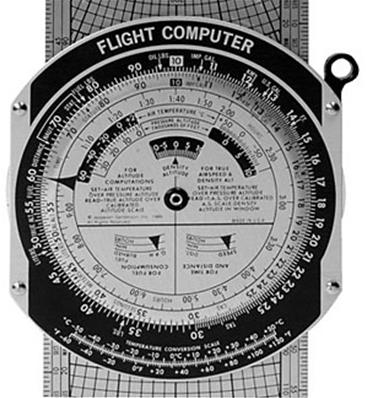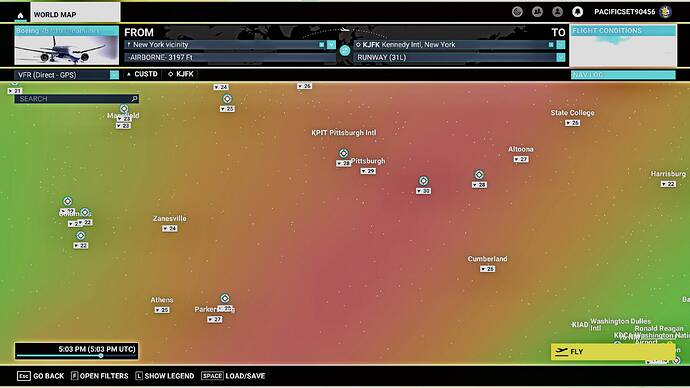Title says it all… In P3D I used Active Sky to get wind aloft. Now I cant trust any official wind aloft map as MSFS default weather doesnt really follow real world observations but rather uses a model to forecast them…
Generally speaking, the NOAA Wind feed into Little Nav Map aligns with in-sim winds aloft to within a few degrees of heading. So you could try cross-checking that. That inputs into LNM’s Block Fuel report section; so that gives me an idea of range, tail/head wind effects and fuel remaining for reserve.
I do my fuel planning by looking at the world map radius ring. If my destination is within the radius ring, then I have enough fuel. Then I add a bit of extra fuel just for reserve, with feeling. Then I click fly. Hahah.
you can use Windy to get an indication as well.
Also remember that not everywhere in the world is covered with real world observations (like over the south atlantic ocean for example).
I estimate the needed amount of fuel on my experience, start the flight and then see how I get along. 
I use a flight computer
Then add sufficient reserve usually 1h for local VFR flight + 30 min taxi fluel.

Real world pilots/dispatchers get their wind aloft data from forecast models, too. Those models are updated every 12 hours by wind measurements made using weather balloons, satellites, and direct measurements made by enroute aircraft. Have a look at
Stated differently, there’s no Active Sky in the real world, only in flight sims. 
And if anyone is wondering, those NOAA forecasts are sometimes quite wrong, which is why airliners occasionally need to divert to airports short of their intended arrivals in order to refuel. Happens all the time.
Toggle on the various wind layers on the World map to look at general direction and speed and then stick a wet finger in the air and put in some extra fuel.
I use a free SimBrief account to plan my flights.
NOAA feed into LNM was within five degrees compared to sim on a 450 NM hop from Reykjavik to Vagar (Faroes Islands) that I just finished now in a C172 JT-A. I used LNM heavily this past year on a RTW with the TBM; no complaints.
I am old school to regarding fuel planning I just wonder if the sim is close enoguh to aviationweather.gov and other official forecasts.
I plan my route to fly close to alternative landing spots … which is kinda easy in a Toprudder Solo as most villages have a garage and if not you can always borrow from a local farmer or someone (a little imagination is needed) 
I’ll admit that my method tends to be to look at what the flight plan time/distance is in something like SkyVector and then plan an additional 10 to 15% fuel load in the simulator…
I maybe mistaking here, but isn’t Winds Aloft itself a forecast only used in North America, rather than real-time data?
How does one collect real-time winds aloft data outside North America? Or anywhere for that matter? The only real-time data one gets is from an airliner’s FMC, but that works for that plane at that instant. How does that get used for planning in advance of the flight?
ingame pretty much this. Checking roughly if I have head or tail wind, then add the extra buffer accordingly
IRL would be an other story
Winds aloft don’t change anywhere near as quickly as surface level winds, and in general are easily forecasted. Because of this you can trust any winds generated by the forecast models should be reasonably accurate.
Just to give you some context, for an ultra long haul flight, say HKG-JFK (16 hours flight time), the flight plan would typically be generated 2-3 hours prior to departure. Forecast models are typically generated only a few times a day, (GFS for instance is every 6 hours,) so even the data used in flight plan generation is normally a few hours old. By the time the aircraft is landing in JFK, it’s enroute wind data could be as much as 20-24 hours old, yet it’s still impressively accurate.
As long as your flight planner, (SimBrief, PFPX, LNM,…) is set to use live weather, not archived, and you use live weather in MSFS, you should be fine.
Interesting side note: My airline trialed updating winds aloft on long flights after about 6 hours, hoping to get fuel savings with improved level predictions with the more recent wind data. Turns out the fuel savings were so small it couldn’t cover the cost of sending the wind data via ACARS haha.
You do realize ActiveSky’s winds aloft are also a forecast, right? There’s no weather station in the sky; every winds aloft prediction is based on a forecast.
The only measurement possible is getting theoretical data, then going up in the air and actually verifying that the winds aloft were as predicted.
